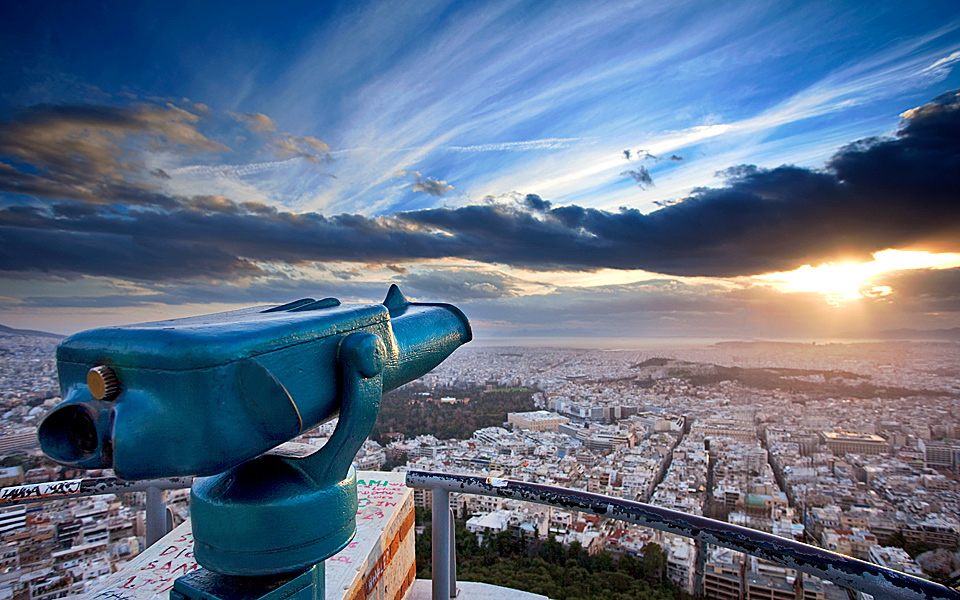GOING UP
Lycabettus Hill rises 277 meters above the city and offers a great opportunity to take in panoramic views on an invigorating walk that takes 45-90 minutes depending on the route you take. There are two ways to “conquer” Lycabettus on foot. One is to follow the road that leads to the theater and ends on the opposite side facing the district of Ambelokipi, while the other is to ascend the stone steps that begin on the circular road around the hill, especially on the approach from Daskalogianni or Sarantapichou streets. This circular road frequently changes name: from the Kolonaki side as far as the Neapoli area it is called Sarantapichou, after which it is called Daskalogianni and Koniari toward Ambelokipi, and Melinas Merkouri, Aristodimou, Hoida, Doras d’Istria, Aristippou and Ilia Rogakou toward Kolonaki.
There is of course an easier way to reach the top of Lycabettus, by taking the funicular. The cable car departs every 30 minutes (every 10 minutes at peak times), and its terminal is at the end of Aristippou street, a cul-de-sac, in Kolonaki. The ride to the top takes three minutes and the service stops at 2 or 2.30 am.
“ The hill owes its name to orobanche or broomrape (lykos in Greek), which according to the Athenian historian Phalinos, once covered the slopes. ”
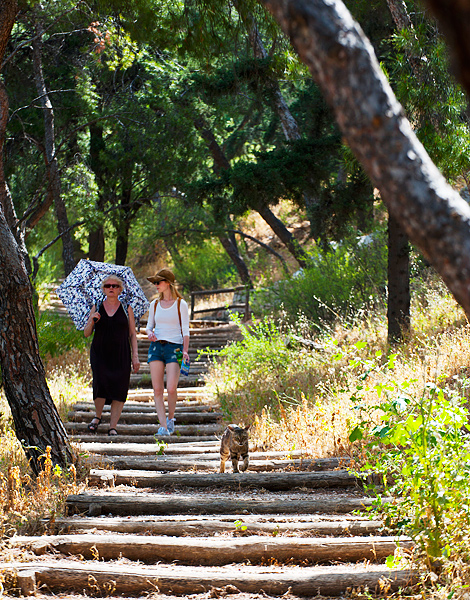
© Clairy Moustafellou
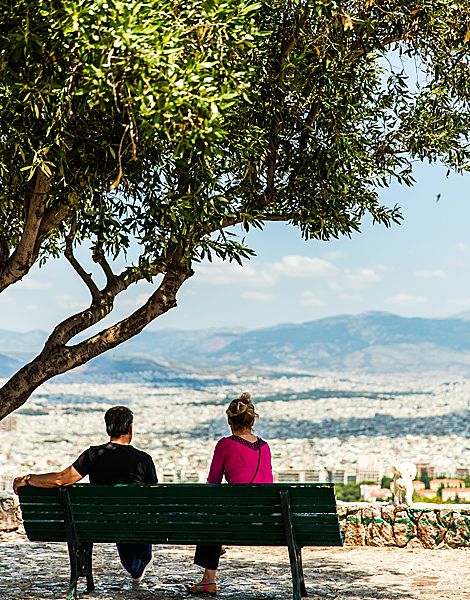
© Dimitris Vlaikos
“ If you’d rather not walk up hill, you can always opt for the cable car which departs every 30 minutes. You’ll be on top in just three minutes. ”
FLORA AND BIRDLIFE
The diverse vegetation on the hill is comprised of pine, cypress, eucalyptus, olive, almond and carob trees, along with euonymous, ivy, oleander, privet, prickly pear, osier, Spanish broom, etc. The hill actually owes its name to orobanche or broomrape (lykos in Greek), which according to the Athenian historian Phalinos, once covered the slopes. The pine forest you see today was planted in 1882.
During your walk you are likely to see swifts, goldfinches, greenfinches, Eurasian collared doves, tits, blackbirds, chaffinches, starlings, robins, crows and owls.
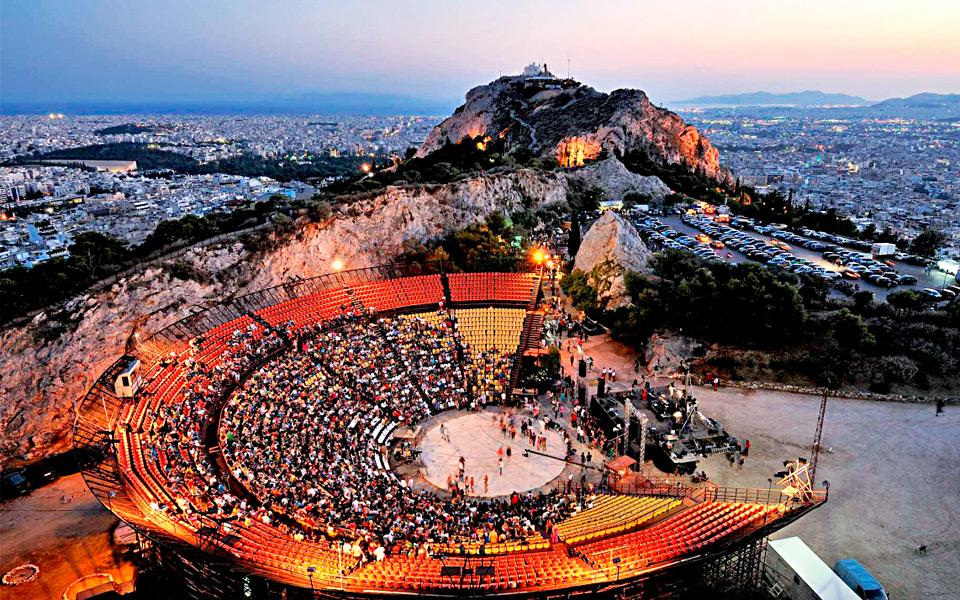
© Dimitris Vlaikos
WHAT TO SEE
To visit the picturesque church of Agioi Isidoroi, which is built in a cave, follow the classic route. Start the climb on the circular road (Sarantapichou) and follow the signs for “Lycabettus Theater”. At the second sharp turn, take a slight detour. Instead of turning, continue straight on, following the sign for the church. Shortly after, to the left you will see the 72 steps that ascend to the church and on the right a wooden gazebo, a veritable “balcony”, with benches and a stunning view. The church is built in, or rather carved out of, the biggest cave on Lycabettus and used to be known as the Chapel of St. Sidereas. It was built in the 15th or 16th century, destroyed by fire in 1829 and immediately reconstructed. Since 2001 it has undergone extensive restoration, while many trees, bushes and ornamental shrubs have been planted in the surrounding area. Especially at Easter time, the services during Holy Week are among the most somber in Attica.
Returning to the main road, you may want to make a brief stop to admire the towering cypress tree standing on the inside of the sharp turn. Make your way up to the square in front of the 3,000-seat outdoor theater. Considered a must-see in Athens during summer, the theater hosts major concerts by top Greek and international artists. Opposite its entrance is a small canteen serving refreshments, coffee, hot dogs, beers, which is open every day from early in the morning till late at night (around 1.30 am). Athenians often park here, their cars facing west, to enjoy a romantic moment as they watch the sunset.
“ Considered a must-see in Athens during summer, the theater hosts major concerts by top Greek and international artists. ”
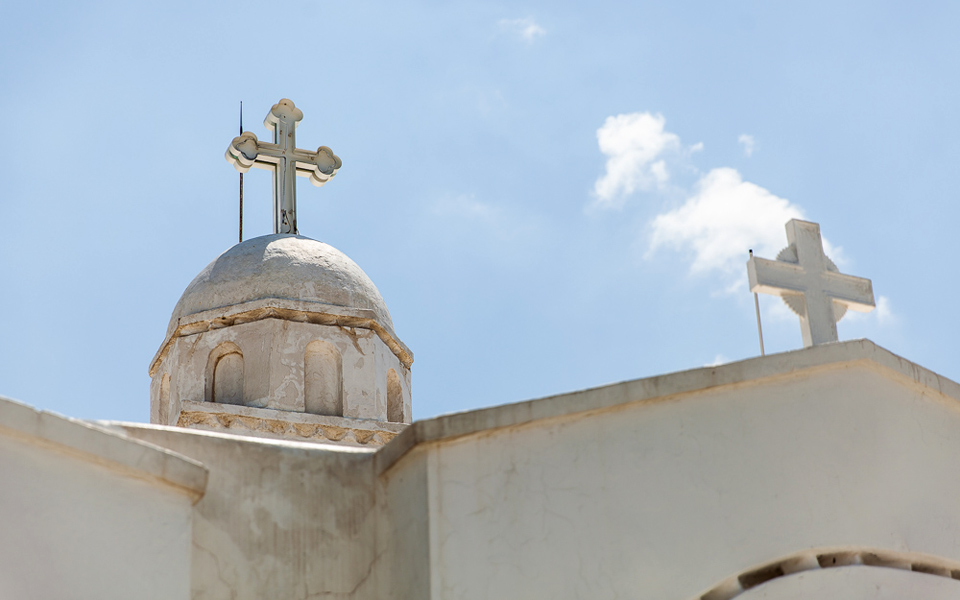
© Perikles Merakos
“ Probably breathless, you will pass (or stop off) at the Orizontes café-restaurant, which serves coffee, refreshments and elegant food, before reaching a small flat area at the top of the hill, where the chapel stands.”
On the left there is another wooden gazebo and to the right, next to a basin with water for stray animals and birds, the start of the main ascent. The walk up to the Chapel of St. George is fairly demanding, since there are 133 steps (if we counted correctly) to climb. As you ascend, however, your efforts will be rewarded by the startling view. Probably breathless, you will pass (or stop off) at the Orizontes café-restaurant, which serves coffee, refreshments and elegant food, before reaching a small flat area at the top of the hill, where the chapel stands. The Cycladic-style chapel was first used for worship by a Cretan monk, Emmanuel Louloudakis, in 1834. In ancient times, it is believed that a shrine to Zeus Akraios occupied the same spot. The tall belfry was a gift from Queen Olga. (Open daily: 08.00 -14.00 and 16.00 – 21.00)
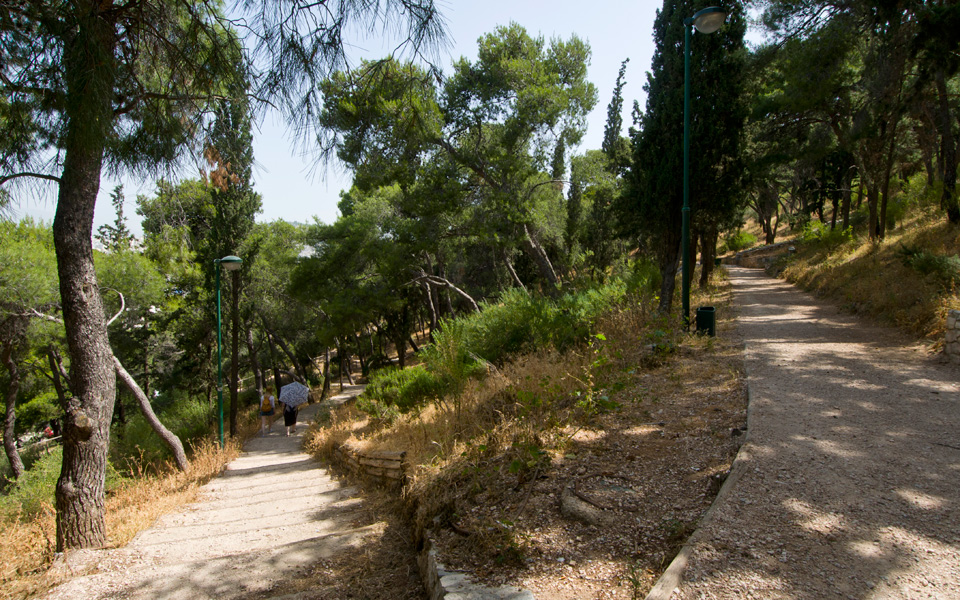
© Clairy Moustafellou
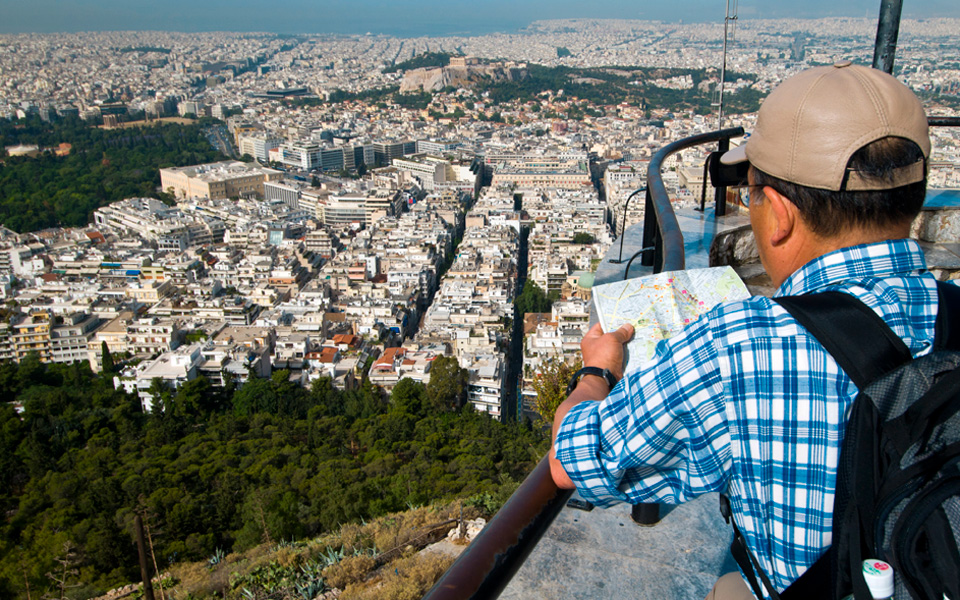
© Clairy Moustafellou
COMING DOWN
To make your way down, head for the circular road (the Daskalogianni street section), that is, in the direction of Neapoli. You will now have the opportunity to enjoy a leisurely stroll in a lush green setting. If you get tired of the asphalt, you can always take one of the footpaths. An equally pleasant walk awaits in the opposite direction. It begins opposite the place where Daskalogianni street intersects with Paliggenesias. From there, head back up the hill and descend on the Kolonaki side.

